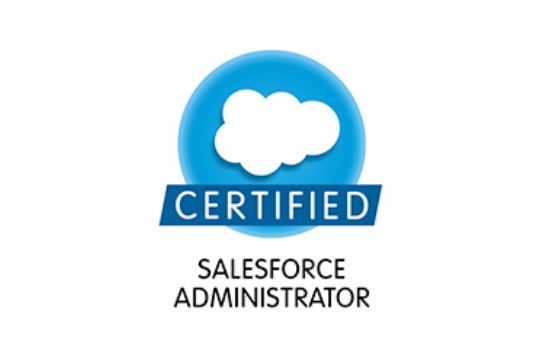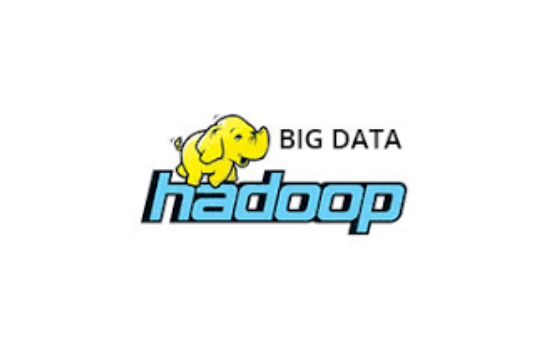Course Description
Tableau is a powerful data visual analyzing tool that provides effective pictorial and graphical representations of data to deliver with unique data visibility. It is the most advanced tool used for effective data visualization and data analytics in the business intelligence industry. It helps to create and distribute an interactive and shareable dashboard, which depicts the density of data, trends, and variations in the form of charts and graphs. Tableau is the best data visual analyzing tool in Business Intelligence technology. Unique features like data blending, a collaboration of the data and real-time analysis make Tableau software use in Business, Government organizations and IT platforms. Top MNC’s hiring Tableau developers, data analysts, data scientists and consultants as the demand for Tableau is high in the data visualization and business intelligence market.
Hachion’s Tableau online course is well designed by professional experts with advanced concepts. Qualitative content and expert training help you to gain in-depth knowledge of the tool. Even beginners can also learn this course very easily as the curriculum is prepared in a step by step procedure. Tableau is very easy to learn and user friendly. Freshers who want to build a career in Business Intelligence and Data Analysis may choose the Tableau career path because there are diverse numerous job opportunities with great pay.
Certification
ServiceNow Admin Certification
Servicenow Developer Certification
Who This Course is for
Anyone interested to learn the ServiceNow tool is welcome to join this course
Curriculum
- 15 Sections
- 193 Lessons
- 4 Weeks
- Introduction to Business Intelligence & Tableau2
- Field Types and Visual Cues19
- 3.1Tableau Desktop
- 3.2Scenario
- 3.3Objectives
- 3.4Application Terminology and Definitions
- 3.5Opening and Closing Tableau
- 3.6Data Source Page
- 3.7Tableau Workspace
- 3.8Files and Folders
- 3.9Getting Started with Tableau
- 3.10View Terminology and Definitions
- 3.11View Sections
- 3.12Data Terminology and Definitions
- 3.13Data Types
- 3.14Data Roles: Dimension vs. Measure
- 3.15Data Roles: Continuous vs. Discrete
- 3.16Changing Data Roles
- 3.17Visual Cues for Fields
- 3.18Visual Cues for Fields in the Data Pane
- 3.19Visual Cues for Fields in the Rows or Column Shelves
- Data Connection in Tableau Interface13
- 4.1Connecting to Tableau Data Server
- 4.2What is a Join
- 4.3Types of Joins
- 4.4When to Use Joins
- 4.5Enabling Right Outer Join
- 4.6Right Outer Join and Custom SQL Enabled
- 4.7What is Data Blending
- 4.8When to Use Data Blending
- 4.9Data Blending in Tableau
- 4.10Differences Between Joining and Blending
- 4.11Joining vs. Blending
- 4.12Writing Custom SQL
- 4.13Prepare your Data for Analysis
- Tableau Generated Fields4
- Geographical Mapping Features10
- Organizing and Simplifying Data34
- 7.1Objectives
- 7.2Filtering Data
- 7.3What is a Filter
- 7.4Applying a Filter to a View
- 7.5Filtering on Dimensions
- 7.6Filtering on Dimensions Functions
- 7.7Aggregating Measures
- 7.8Filtering on Measures
- 7.9Filtering on Dates
- 7.10Quick Filters
- 7.11Sorting of Data
- 7.12What is Sorting
- 7.13Sorting Data in Tableau
- 7.14Types of Sorting
- 7.15Creating Combined Fields
- 7.16Combined Fields
- 7.17Creating Groups and Defining Aliases
- 7.18What is a Group
- 7.19What are Aliases
- 7.20Defining an Alias
- 7.21Working with Sets and Combined Sets
- 7.22Sets
- 7.23Combined Sets
- 7.24Working with Groups and Sets
- 7.25Drill to Other Levels in a Hierarchy
- 7.26Grand totals and Subtotals
- 7.27Adding Totals
- 7.28Adding Totals
- 7.29How to Define Aggregations
- 7.30Changing Aggregation Function
- 7.31Tableau Bins
- 7.32Bins Types
- 7.33Fixed Sized Bins
- 7.34Variable Sized Bins
- Formatting and Annotations14
- 8.1Formatting and Annotations
- 8.2Adding Caption to Views
- 8.3Click Interaction Adding Title to View
- 8.4Click Interaction2 Adding Captions to View
- 8.5Using Titles Captions and Tool tips
- 8.6Adding Tooltips to Views
- 8.7Using Title Caption and Tooltip
- 8.8Formatting the Axes
- 8.9Edit Axis Option
- 8.10Formatting Views with Labels and Annotations
- 8.11Format Window
- 8.12Format Mark Labels
- 8.13Annotations
- 8.14Format Manipulations
- Special Field Types17
- 9.1Special Field Types
- 9.2Date Hierarchies
- 9.3Drilling in the Time Hierarchy
- 9.4Pivoting Date Parts on Shelves
- 9.5Differentiate Between Discrete and Continuous Dates
- 9.6Using Continuous Dates
- 9.7Using Discrete Dates
- 9.8Working with Discrete and Continuous dates
- 9.9What are Custom Dates
- 9.10Creating and Using Custom Dates
- 9.11Fiscal Year
- 9.12Define a Date Field on a Fiscal Year
- 9.13Relative Date Filters
- 9.14Importing Date Dimensions in Tableau from a Cube
- 9.15Work with Date Hierarchies on Cubes
- 9.16Dates in Cube (Multidimensional) Data Sources
- 9.17Dates in Cubes Vs. Relational Data Sources
- Chart Types - Data Visualization19
- 10.1Chart Types
- 10.2Working with Combined Axis
- 10.3Working with Combination Charts
- 10.4Understanding Geocoding and Geographic Mapping in tableau
- 10.5Combined Axis Graph and Scatter Plot
- 10.6Describe text and highlight tables
- 10.7Work with Pages Shelf and Create Motion Charts
- 10.8Heat Maps
- 10.9Using Bins and Histograms
- 10.10Using Histograms
- 10.11Using Pie Charts
- 10.12Compare Measures Using Bullet Charts
- 10.13Using Bar in Bar Charts
- 10.14Creating Pareto Charts
- 10.15Using Waterfall Charts
- 10.16Using Gantt Charts
- 10.17Working with box plots
- 10.18Using Sparkline Charts
- 10.19Define Advanced Chart Types
- Logical Formulas-Calculations Part15
- 11.1Calculations Strings Date Logical and Arithmetic Calculation
- 11.2Objectives
- 11.3Strings Date Logical and Arithmetic Calculation
- 11.4Working with Strings Date Logical and Arithmetic Calculations
- 11.5Using Strings Date Logical and Arithmetic Calculations
- 11.6Working with Arithmetic Calculations
- 11.7Aggregation Options
- 11.8Working with Aggregation Options
- 11.9Grand Totals and Sub-Totals
- 11.10Quick Table Calculations
- 11.11Creating Quick Table Calculations
- 11.12Working with Quick Table Calculations
- 11.13Automatic and Custom Split
- 11.14Ad-hoc Analytics
- 11.15LOD Calculations
- Creating and usingParameter7
- Analytics-Statistics17
- 13.1Statistics
- 13.2Objectives
- 13.3Add Reference Lines Bands and Distribution
- 13.4Adding Reference Lines
- 13.5Adding Reference Bands
- 13.6Adding Reference Distribution
- 13.7Working Reference Lines Bands and Forecasting
- 13.8Trend lines and Trend Models
- 13.9Understanding Trend Lines
- 13.10Enabling Trend lines
- 13.11Click Interaction Understanding Trend Models
- 13.12Working with Describe Trend Model Window
- 13.13Working with Trend Lines
- 13.14Statistical Summary Card
- 13.15Perform Drag and Drop Analytics
- 13.16Explore Instant Analysis
- 13.17Forecasting
- Dashboards Designing14
- 14.1Dashboards
- 14.2Objectives
- 14.3Build Interactive Dashboards
- 14.4What is a Dashboard
- 14.5Building Dashboards
- 14.6Best practices for creating effective dashboards
- 14.7Comprehending Best Practices
- 14.8Creating a Dashboard and Importing Sheets
- 14.9Interaction Exploring Dashboard Actions
- 14.10Use of Running Actions
- 14.11Using Dashboard Actions
- 14.12Sharing your Work
- 14.13How to Share your Reports
- 14.14Exporting your Work
- Case Study3
- Additional benefits5







